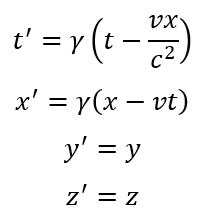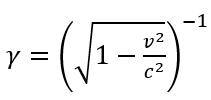Introduction.
The Lorentz transformation is the corner stone of the special relativity. . There is another corner with the stone named causality. Please don’t mix the term with common sense causality – it is relativistic causality. In relativity causality means that an effect can not occur from a cause that is not in the light cone of that event. If you look at derivation of time dilation formulas in Einstein’s “ON THE ELECTRODYNAMICS OF MOVING BODIES”, you’ll notice that all derivation began with sending the light to the moving frame and receive reflected light back. The result is Lorentz transformation which set the relationship between time and coordinates of moving and stationary frames. Causality simply means that death could not happened before death. But both the birth and death happened in moving frame, there are no birth and death in our stationary frame, we just looking at those events using light as a media for information transferring. Those are not events, just an image of events happened in moving frame. Why can’t we mix a photograph and look at death photo before birth photo? Relativity prohibit us to do so, it is impossible to reverse the direction of video recording according to relativistic physics.
It was found that under certain circumstances even Lorentz transformation does not satisfy causality principle, which means that relativity theory contradict itself.
The Math.
Lorentz transformation set up the following relationship:

where (t,x,y,z) is the coordinate of event in stationary frame, (t',x',y',z') is the coordinate of the same event in frame moving with velocity v along x axis and

is the Lorentz factor.
For further simplification let assume that we only interested in events happened at spatial coordinates (0,0,0). Then Lorentz transformation simplified to time dilation formula:

Here we are not interested in the transformation of spatial coordinates.
Assume that two events happened in the stationary frame with time separation of Δt. Another assumption is that space ship decelerating, and its velocity decreased by the value Δv. Then:

And the time interval between such events in the moving frame will be:

Causality break means that time interval could get negative value. Could primed time interval took a negative value? We’ll see:

Assuming Δt<<t1 and Δv<<v1 give us:

As you can see, the above equation could be easily satisfied under absolutely any circumstances. Events time separation, velocity of the moving frame and speed reduction could accept any value. Choosing the moment t1 far enough from the moment of clock synchronization, makes time interval negative.
Practical Part.
Let interstellar ship travel at 0.8c. Event #1 happened on Earth at t1. Event #2 happened at t2. The ship decelerating with acceleration approximately 1g or 10 m/sec2. Then:

The problem starts at t1 equals 108 or approximately 3.17 years.
According to our finding the problem increased at bigger times.
Conclusion.
Lorentz transformation does not satisfy causality principle of relativistic physics. The order of the events could be reversed if moving reference frame decelerating.